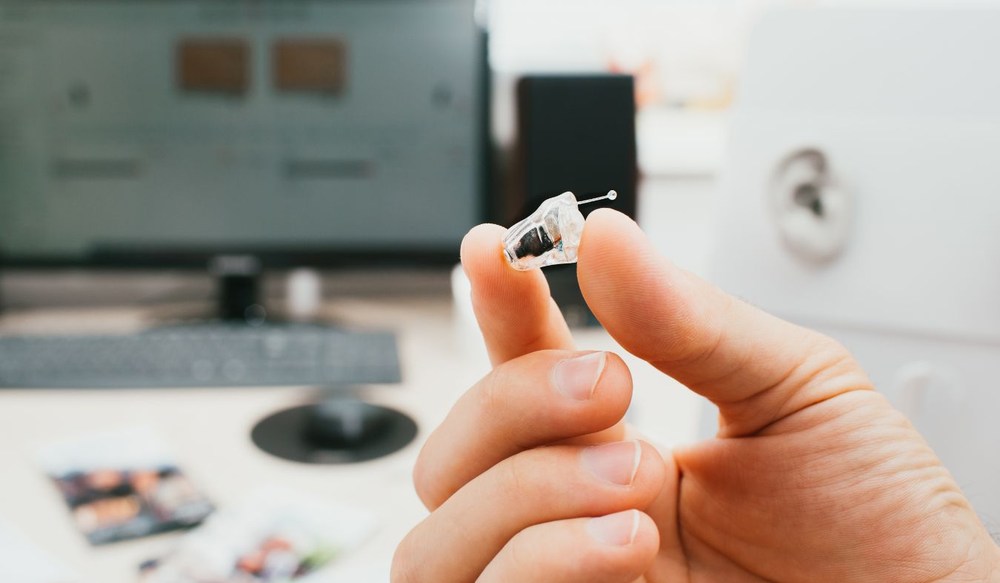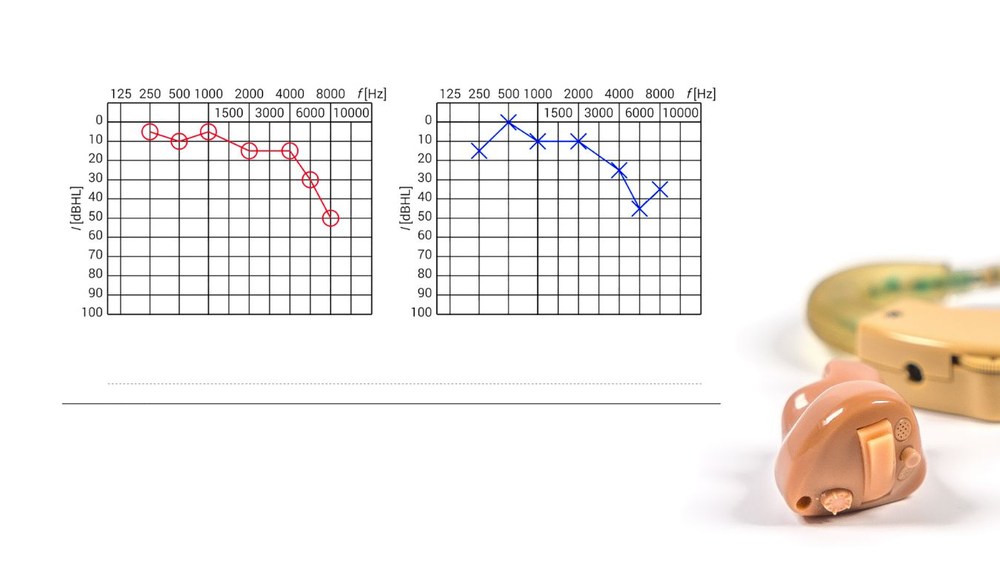The Impact of Hearing Tests on Quality of Life
Regular hearing tests are important even if you haven’t noticed any
New Location Now Open in Eugene! LEARN MORE →

By: admin | September 24, 2025
Your hearing test results do more than just tell you whether you have hearing loss; they serve as a roadmap for selecting the right hearing aid technology and features for your specific situation. These detailed measurements reveal which frequencies you struggle with most, how severe your hearing loss is in each ear and what types of sounds are most challenging for you to hear clearly. This information directly influences everything from the style of hearing aids that will work best to the specific technology features that will make the biggest difference in your daily listening experiences.
Once you have hearing aids, those same test results become the foundation for programming your devices to match your unique hearing profile. Rather than using generic settings, your audiologist uses your specific hearing data to customize how your hearing aids amplify different sounds and handle various listening environments. This personalized programming process ensures that your devices provide the right amount of help where you need it most, whether that’s boosting soft speech sounds or managing background noise in busy places.
Regular hearing tests are an essential part of maintaining long-term hearing health. Our ears naturally change over time, and hearing loss often develops gradually. Many people may not notice subtle changes in their ability to hear certain pitches or distinguish speech in noisy environments. Routine hearing evaluations help identify these changes early, allowing for timely interventions that can prevent further decline and support overall auditory wellness.
Early detection through regular testing offers multiple benefits. It allows you to address potential issues before they affect communication, relationships and quality of life. By tracking hearing health over time, clinicians can provide personalized recommendations, like adjustments to hearing protection habits, environmental modifications or amplification devices. Even small changes in hearing can be significant, and monitoring them ensures that you maintain the ability to engage fully in daily activities and social interactions.
Hearing tests also play a preventive role. They can reveal risks related to noise exposure, medication side effects or underlying medical conditions that might impact hearing. Identifying these factors early provides an opportunity to make lifestyle adjustments or medical referrals to minimize damage. Regular evaluations create a baseline for your hearing, making it easier to detect changes promptly and tailor interventions effectively.
Your ears are always at work, picking up sounds from the world around you. Sound waves travel through the ear canal, reach the eardrum and then move through tiny bones into the inner ear.
Inside the inner ear, thousands of tiny hair cells turn these sound waves into signals your brain can understand. Over time, these hair cells may become less sensitive due to aging or repeated exposure to loud noises.
Changes in hearing are common as people get older or spend years around loud environments. Understanding how your ears process sound helps explain why regular hearing checks matter and why your hearing needs may change as time goes on.
You might notice signs that suggest it is time for a hearing test, like turning up the TV louder than others prefer, asking people to repeat themselves often or having trouble following conversations in noisy places. Getting a hearing test can help catch changes early and make it easier to enjoy conversations, though some people may feel nervous about the process or worry about what the results might mean.
Early testing can lead to better hearing support, improved communication and peace of mind. Some people may feel anxious about testing or be concerned about possible costs and next steps, but addressing these concerns with the audiologist can help you feel more comfortable.
Before any actual hearing tests begin, your appointment starts with a conversation to help the clinician understand your hearing health history. We’ll ask about your family history, as certain types of hearing changes can run in families. Sharing this information helps us identify any potential patterns or risks that could affect your hearing over time.
Next, we’ll talk through your personal experiences and symptoms. You’ll have the chance to describe any challenges you’ve noticed, like difficulty following conversations in noisy environments, ringing in the ears or changes in your ability to hear certain sounds. This discussion gives important context and ensures we address your specific concerns.
An ear examination is also part of this initial step. Using specialized tools, we check the outer and middle ear for any issues, like wax buildup, fluid or structural concerns that might influence hearing. This careful look helps rule out factors that could affect the next stages of the appointment and provides a clear picture of your ear health before any testing begins.
Audiologists use several types of tests to check your hearing in different ways. Each test provides important information about how well you hear sounds and understand speech. The audiologist will recommend the evaluations most helpful to your individual needs, but may include:
Understanding your hearing test results can feel confusing at first. The numbers and charts may look complicated, but the specialist will explain what they mean for you.
When you look at your results, you might see:
The way you live and the environments you spend time in can really affect your hearing. Everyday activities you might not think of as risky, like going to concerts, using power tools, mowing the lawn or certain hobbies, can expose your ears to loud sounds that slowly change how you hear. Even short bursts of loud noise, if they happen often, can add up over time.
Spending a lot of time in noisy places without protection puts extra strain on your ears. Over time, this can make it harder to hear higher-pitched sounds or follow conversations when it’s busy around you. Taking simple precautions makes a real difference. Choosing quieter activities when you can, using earplugs or earmuffs, and keeping headphones at a safe volume all help protect your hearing. Paying attention to these everyday habits can keep your ears in better shape for years to come.
Deciding when to try hearing aids can feel like a big step, but there are some clear signs that can help guide your choice. If you notice that conversations are harder to follow or you often miss important sounds at home or in public, hearing aids may be worth considering.
You might also find yourself feeling left out during group discussions or needing to ask others to repeat themselves more often. Hearing aids are designed to make speech clearer and everyday sounds easier to hear, which can help you stay connected with friends and family. Talking with the specialist about your daily experiences is an important part of finding out if hearing aids could improve your quality of life.
Properly adjusted hearing aids can make a real difference in your daily life. When your devices are set to match your hearing needs, conversations become clearer and background noises are less distracting.
Wearing hearing aids that fit well and are adjusted correctly helps you stay connected with friends, family and coworkers. This support makes it easier to enjoy social events, follow along at work or school and feel more confident in different listening situations.
Getting new hearing aids involves a thorough and personalized fitting process. The goal is not only to make sure the devices feel comfortable in the ears, but also to ensure they perform in a way that matches each person’s unique hearing needs. Every ear is different, and every hearing profile is different, so the process is designed to address those individual differences.
During the fitting, the hearing aids are programmed based on the results of a recent hearing evaluation. Each device is adjusted to provide the right level of amplification for the specific frequencies that need the most support. Settings are then fine-tuned while listening to different sounds, helping the devices feel natural and clear in everyday environments. Real ear measurement is often used during this step. This technique places a tiny microphone in the ear canal to measure exactly how the hearing aids are delivering sound. The measurement ensures the devices are providing the correct amount of amplification, so sound is accurate, balanced and comfortable.
The fitting process also includes guidance on inserting and removing the devices, cleaning and maintaining them, and handling everyday listening situations like phone calls, television or busy social settings. Tips and adjustments help make sure the hearing aids are easy to use and effective.
Appointments after a hearing aid fitting are an important part of making sure the devices work effectively. When first using hearing aids, it can take time for the ears and brain to adjust to new sounds. These visits provide a chance to address any discomfort, feedback or fit issues while fine-tuning the devices so they perform well in everyday situations.
Adjustments are often based on real-life experiences. Noisy restaurants, busy streets or watching television at home can reveal areas where the devices need more support or less amplification. Additional checks, including real ear measurement if needed, ensure the hearing aids are delivering the right amount of sound for each ear. Regular adjustments help keep the devices comfortable, clear and effective.
These appointments also offer an opportunity to review proper care and maintenance. Earwax, moisture and normal wear can affect performance over time, and checking the devices helps maintain their effectiveness. Consistently addressing adjustments and care ensures hearing aids continue to support better hearing and feel natural in all listening environments.
If you start having trouble understanding conversations, hear more feedback or whistling from your devices, or feel discomfort, it may be time for a visit. Regular checkups are also recommended every six to twelve months, even if everything seems fine.
Sometimes changes in your daily routine or health can affect how well your hearing aids work. Even small shifts in hearing can make a difference in how clearly you hear speech and other sounds. Keeping up with scheduled visits helps make sure your devices continue to support you as well as possible.
Your hearing test results give us a detailed understanding of your hearing, showing which frequencies are hardest to hear, how each ear is affected and what types of sounds may be most challenging. Using this information, we can program your hearing aids to match your unique profile rather than relying on generic settings. This ensures that your devices provide the right support for soft speech, background noise and the variety of listening situations you encounter every day.
We work closely with you to make sure your hearing aids continue to meet your needs over time. Adjustments and fine-tuning allow us to address changes in your hearing or new listening challenges so that your devices remain effective and comfortable. For support, guidance or to schedule a consultation, contact us at Advanced Hearing Plus in Springfield, OR at (541) 313-3550.
Tags: benefits of hearing aids, hearing aid styles, how-to guides

Regular hearing tests are important even if you haven’t noticed any
By: admin | November 18, 2025

Your hearing test results do more than just tell you whether you have
By: admin | September 24, 2025

The field of hearing care moves forward at a remarkable pace, with new
By: admin | May 23, 2025
